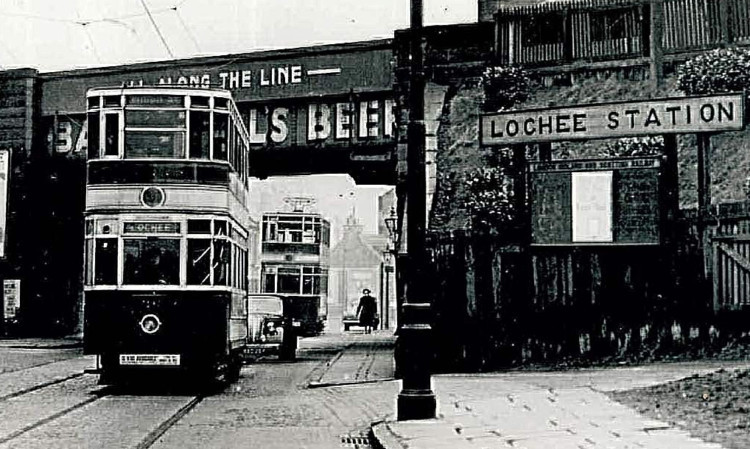Plans to bring trams back to the streets of Dundee have been put before council chiefs.
An outline proposal prepared by consultancy firm Light Rail (UK) and lobbyist boss Jim Harkins suggested a new “pedestrian circulator” tram route would help the city make the most of the impact of its £1 billion regeneration.
However, city development director Mike Galloway rubbished the proposal stressing Dundee’s compact city centre is already well served by bus networks, and questioning the likely benefits of an unproven and uncosted system.
Mr Harkins’ submission envisaged a single route linking the Nethergate, High Street and Seagate before turning into Trades Lane.
It would then see the tram travel between the Custom House and Apex City Quay Hotel, under the realigned on and off ramps of the Tay Road Bridge, and along the new southern boulevard serving the Tay and V&A before reconnecting with theNethergate via a revamped railway station and the South Marketgait.
The plans also highlight prospective future extensions along Camperdown Street to a depot and either down Greenmarket to Seabraes and the airport or towards Dundee University via Perth Road.
Mr Harkins said the first phase of his “inexpensive” proposal could be delivered, without major disruption, for as little as £20 million using cascaded cars and small-gauge and trench-fit track left over from the other previously abandoned projects.Photo gallery: Dundee tramsBut Mr Galloway emphatically rejected the idea instead hailing Dundee’s already “first class” public transportsystem, based around the bus interchange at Whitehall Street.
“The proximity of this interchange to the central waterfront is not coincidental and as the developments turn into destinations the local bus network will remain within a five-minute walk or the bus routes will transition as demand increases,” he said, in an email exchange seen by The Courier.
“The local bus network is a commercial success and operates in excess of 95% of journeys without any operating subsidy and very limited infrastructure costs, especially when compared to the limited, expensive and fixed nature of a tram operation.”
Mr Galloway said neither tram nor light rail options had been explored as part of the waterfront project, and confirmed that they would not be considered.
“I am unable to consider this significant and unnecessary change of direction which is unlikely to deliver any major benefits in terms of accessibility and integration,especially when set against the significant capital costs and high risk of ongoingrevenue support,” Mr Galloway added.
Mr Harkins believes a light rail“circulator” like streetcar systems already in operation in US cities likePortland and San Francisco would see visitors spend more time, and money, in the city.
But he also stressed that his firm’s light rail proposal would have a much smaller footprint than the tram-train systems in operation in cities like Sheffield and about to be unveiled amid long-standing disruption and spiralling costs in Edinburgh.
For futher coverage of the proposal, see Friday’s Courier or try our digital edition.
